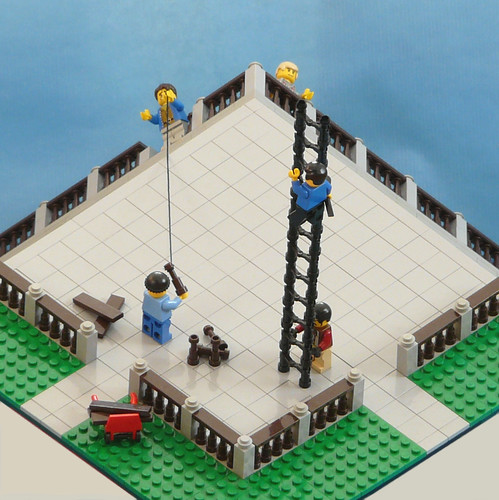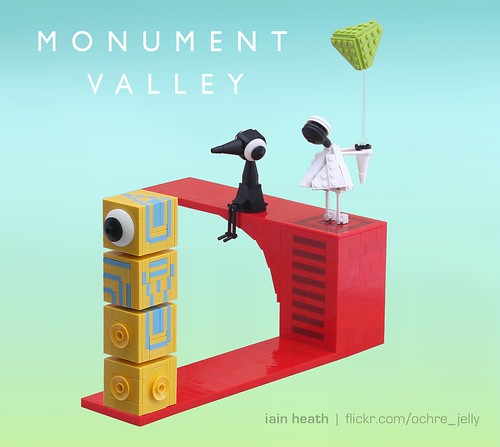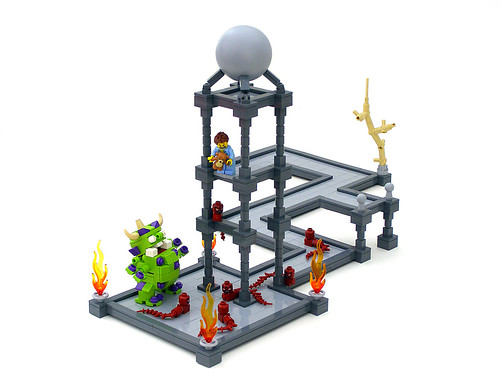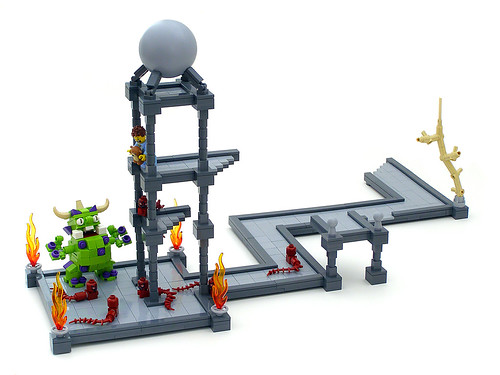Several of the Escher illustrations depicted over the past few days are impossible objects - two dimensional drawings that seem to be of three dimensional objects, but turn out to be optical illusions, unbuild-able in real life. One of the first impossible objects, and one of the inspirations for Escher's Waterfall and other works, is known as the Penrose triangle. This was actually first depicted by Oscar Reutersvärd in 1934, before Roger Penrose independently presented his version.
The Penrose Triangle was the basis for the
Lugnet logo. Lugnet was one of the first major LEGO websites.

John Langrish made this
mosaic of the Lugnet Logo.

The Penrose Triangle has been recreated in LEGO many times. Some of these depend on Photoshop trickery, but others are true three-dimensional creaions, such as this by
Billy Baldwin.

Brixe63's
Modulex version is more remniscent of Reutersvärd's original design.
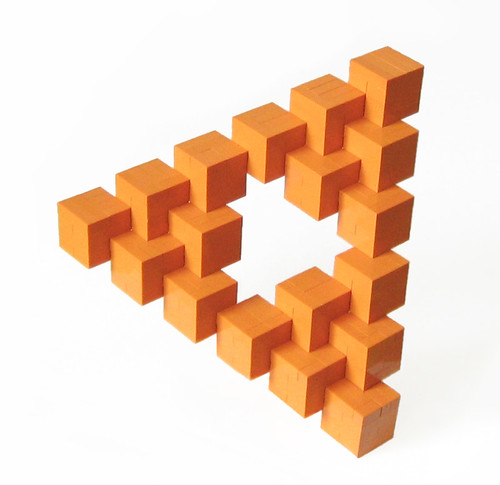
Various other LEGO impossible objects have been built, such as Don Solo's
archway.

Brixe63 has had great fun with the idea in her set of
optical illusions.
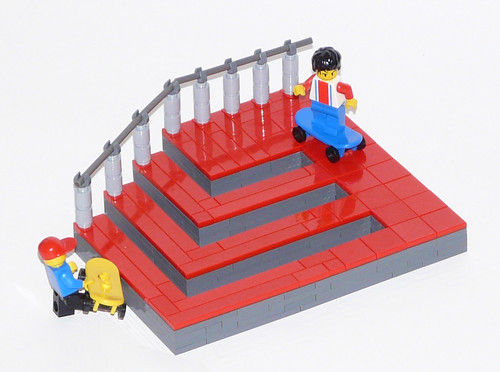
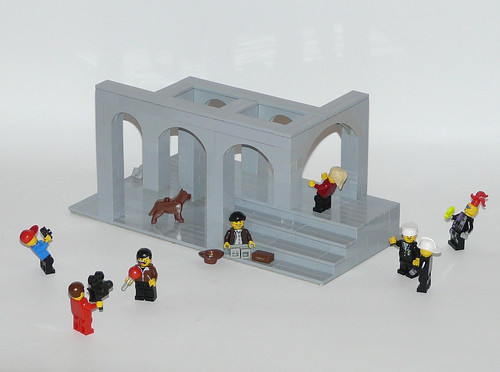
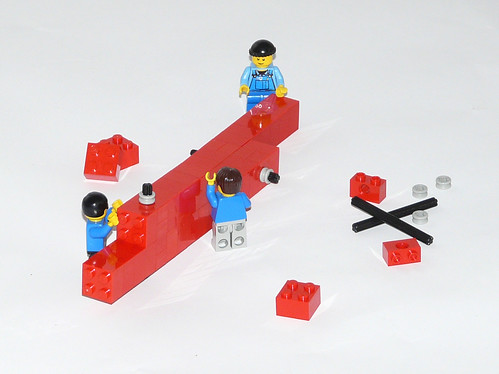
Brixe63 also has this amazing
Terrace, that is based on an impossible scene that was apparently first used by
Sandro del Prete (who was influenced by Escher).
